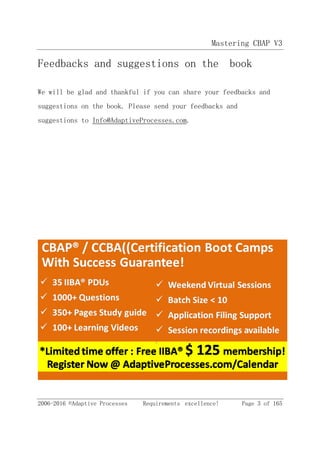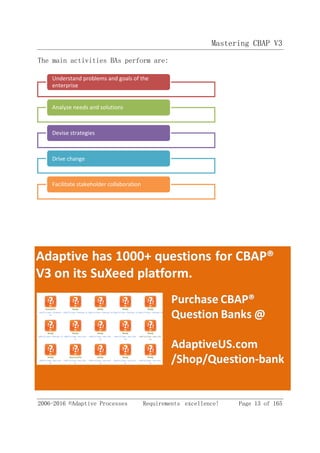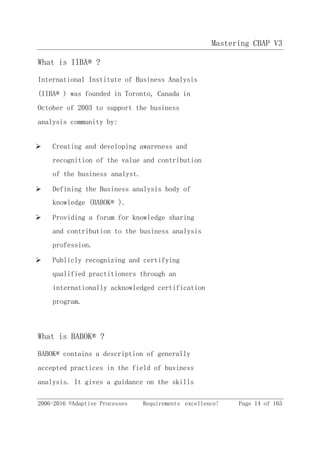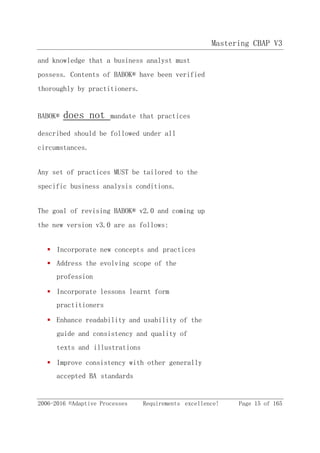The document is a guidebook for the Certified Business Analysis Professional (CBAP) exam that discusses:
1. An introduction to business analysis, including definitions of business analysis, who business analysts are, and overview of the International Institute of Business Analysis (IIBA) and Business Analysis Body of Knowledge (BABOK).
2. Details about the CBAP certification, including eligibility requirements and the certification process.
3. An outline of the guidebook's contents which covers the 9 knowledge areas and tasks from BABOK as well as underlying competencies required of business analysts.







































